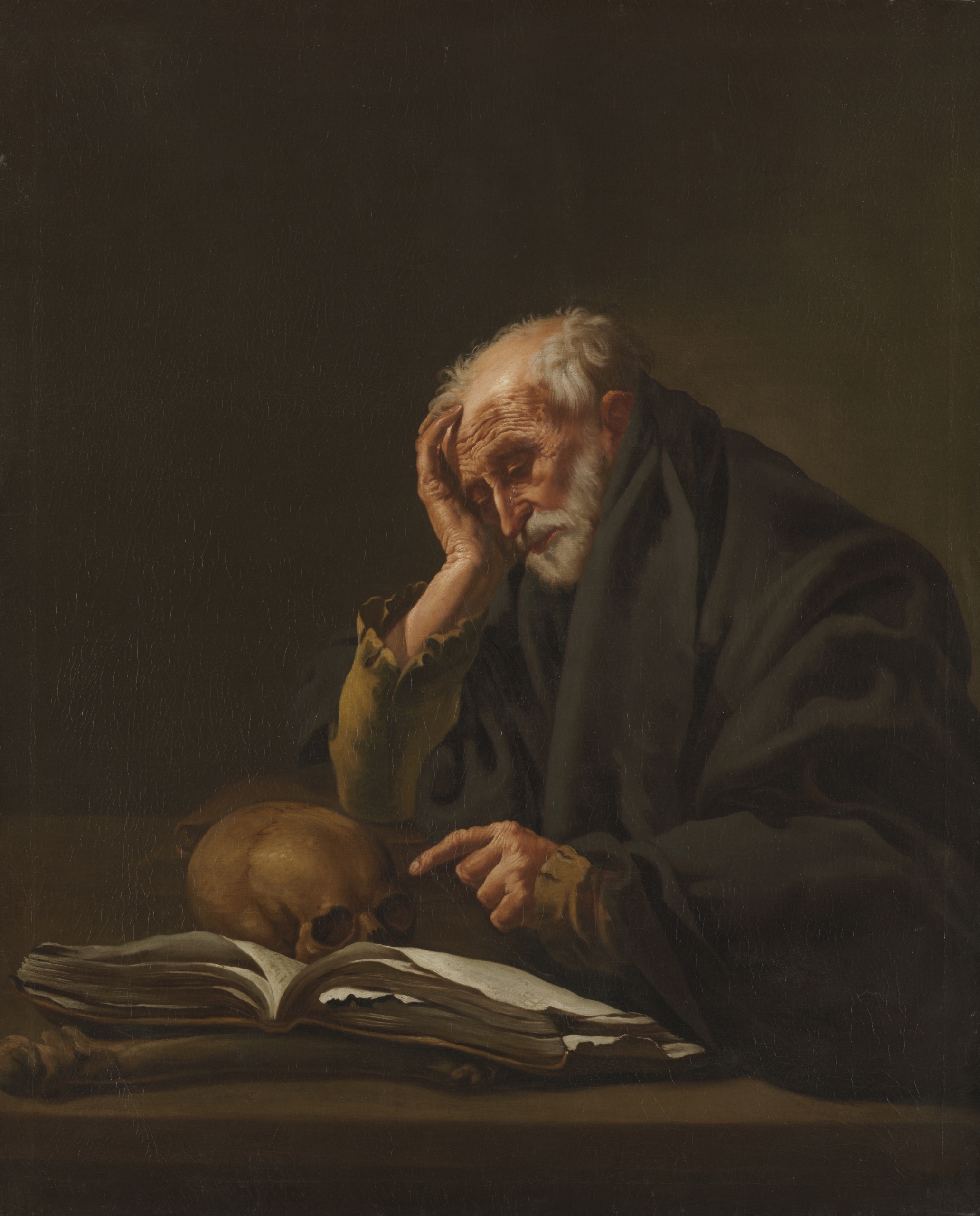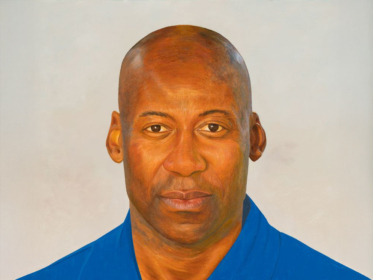The Bitter Tears of Klaus Biesenbach

PITY POOR KLAUS BIESENBACH, director of the Neue Nationalgalerie, who, as he recently told Der Spiegel, “found it hard to bear” that Nan Goldin, a Jewish photographer, gave a speech critical of Israel’s ongoing genocide against the people of Gaza at the opening of her exhibit at his museum last December. Several months after Goldin’s intervention, Biesenbach seems to have spent most of his time thinking about himself — having spared precious little reflection on what he might have done differently. “I was extremely challenged by the situation,” he said. “Because I had to act in different identities at the same time. On the one hand, as a representative of an institution, the German National Gallery. But at the same time as a person who moved to a kibbutz at the age of 19 and has since taken on a different nationality, because I couldn’t stand just being German because of the Nazi crimes.”
Biesenbach was not the only German who found Goldin’s speech hard to take. Hermann Parzinger, former head of the Prussian Cultural Heritage Foundation, joined the chorus of denunciation. A quote from Goldin he apparently found unbearable: “My grandparents escaped pogroms in Russia. I was brought up knowing about the Nazi Holocaust. What I see in Gaza reminds me of the pogroms that my grandparents escaped. Never again means never again for everyone.”
These are challenging and difficult questions, especially when articulated toward a cultural elite who, with the backbones of jellyfish, have thrown every possible humanitarian and internationalist principle out the window.
The unbearable challenge was Goldin’s point. “Were you uncomfortable?” Goldin asked. “I hope so. We need to feel uncomfortable.” She asked, of Germany: Are you afraid? What have you learned? Why can’t you hear? Why can’t you see? These are challenging and difficult questions, especially when articulated toward a cultural elite who, with the backbones of jellyfish, have thrown every possible humanitarian and internationalist principle out the window in favor of merry participation in an aggressively nationalistic, xenophobic crackdown.
The intervening months make it clear that the people who most needed to reflect on Goldin’s words have instead decided to double down on their self-centered ignorance. Many of us who believe that it is precisely because of the Holocaust that ethnic cleansing and genocide can never happen again — those of us, that is, for whom “never again” does not come accompanied by an asterisk and a skin color chart — often argue that Germany’s anti-Palestinian repression is not just an act of reputation management but actually a permission slip for a new muscular nationalism. Staatsräson presents the irresistible temptation of turning guilt into self-righteousness. Horror and self-hatred are transubstantiated into pride and patriotism when the Great National Genocide becomes an origin story for how and why Germans know better about antisemitism.
Yes, the Germans know better: better than racialized people, of course, that goes without saying, and of course better than Jews, who are so often inconvenient, even disagreeable.
Yes, the Germans know better: better than racialized people, of course, that goes without saying, and of course better than Jews, who are so often inconvenient, even disagreeable, when we are actual human beings with agency and the ability to speak back rather than abstract representatives of that favorite German cliché, the need to protect “Jewish Life.” It’s so much more fun to “[move] to a kibbutz…and [take] on a different nationality, because I couldn’t stand just being German” than it is to contemplate what one’s forefathers did and to whom. A colleague once told me, straight-faced, that they could not accept the Jerusalem Declaration on Antisemitism, which offers a distinction between antisemitism and anti-Zionism, because their own convictions about antisemitism were rooted in a “family history going back to work in the camps,” and cried when I objected. Often, in these situations, I think of Hitler’s plan to transform the Prague ghetto into a museum to the dead Jewish culture, and of how much more comfortable many of my German interlocutors would be had that vision come to pass.
Strikingly, despite his sweaty-browed efforts to enforce the boundaries of the sayable, Biesenbach appears to understand himself as a free speech warrior. Later in the interview, he returns, apparently without irony, to the adjective “unbearable” to describe “this new dogmatism, the word-dictates, this political correctness and the ‘virtue signaling’” during the reckoning about racism in the art world that followed the George Floyd protests. He describes the hostess at an art dinner dropping a spoon to change the subject when he raised the topic of freedom of speech. “Such was the fear in the group of speaking out and saying the wrong thing.” Can you imagine? Imagine a fear so profound that a museum felt compelled to send its director onstage with a pre-prepared speech to contradict one of its artists at her opening. Imagine a fear so profound it was enforced by the police.
There is indeed a crisis of free expression in the German art world. That someone of Goldin’s stature made a speech at the opening of her globally touring exhibit — and was then dutifully denounced, first on stage and then in the next day’s papers, by the directors of the museum that had invited her — is hardly a ringing example of cultural or artistic freedom.
It must indeed feel unbearable, when tied in self-serving knots, to be confronted with the kind of genuine ethical and political clarity Goldin demonstrated.
There is a genuine conflict here for a Biesenbach, for someone who needs to both serve Staatsräson and be legibly progressive for a global art audience. Most of his career took place outside Germany; now he’s returned. It must indeed feel unbearable, when tied in self-serving knots, to be confronted with the kind of genuine ethical and political clarity Goldin demonstrated. And who knows what kind of pressure Biesenbach himself was under at the time? Exhibits have been closed, and people have been fired, for less.
E. M. Forster once said, “If I had to choose between betraying my country and betraying my friend I hope I should have the guts to betray my country.” Biesenbach made a different choice. “Strangely enough,” he told Spiegel, “the horror evening of the Goldin opening…also reconciled me with Germany in many ways.” Here it is: the transformation of guilt into national sentiment, from shame at even being German to reconciliation with Germany. The urgent political statement of a Jewish artist against genocide becomes a negative example through which Biesenbach can heal. Having divested himself of his attachments to a foreign, Jewish artist — having properly articulated that he finds his former friend Nan Goldin’s articulation of her principles “hard to bear” — he can take up his place as a proper German, leading a proper German museum.
Six months after Goldin’s opening, at the end of July, the Neue Nationalgalerie hosted a pride-viewing party. Thirty minutes’ walk away, the city’s internationalist pride march was brutally broken up by armed riot police. With only a few small exceptions, neither the ongoing genocide nor the crackdown on people protesting it have been discussed by the city’s state-funded institutions. On 14 September, Biesenbach and the Neue Nationalgalerie invited a thousand Berliners to ring “bells for peace” as part of the closing of a Yoko Ono exhibit. I found this hard to bear.


